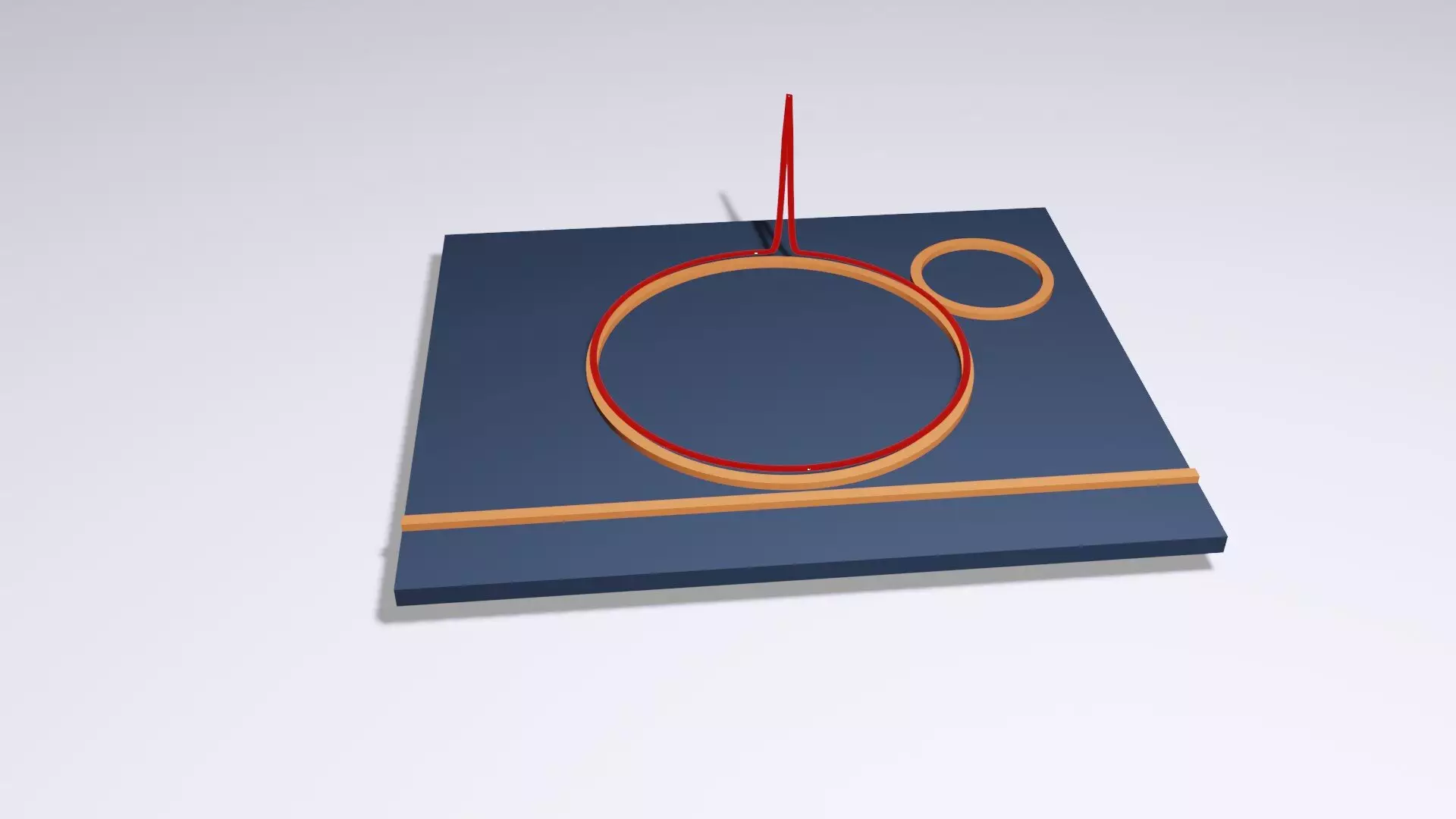Microcombs have the potential to transform our understanding of the universe and revolutionize healthcare. These tiny devices can offer insights into distant planets beyond our solar system and enable us to monitor our health in unprecedented ways. However, the current generation of microcombs falls short of their full potential due to their inefficiency. Fortunately, a groundbreaking solution has emerged from the research laboratories of Chalmers University of Technology in Sweden. Scientists at Chalmers have successfully developed a technique to enhance the efficiency of microcombs by a staggering factor of ten. This breakthrough not only promises new discoveries in space and healthcare but also opens up a world of possibilities for high-performance lasers and other cutting-edge technologies.
Imagine a ruler made of light, capable of measuring frequencies with unparalleled precision. This is essentially what a microcomb represents. At its core, a microcomb relies on a laser emitting photons that circulate within a minuscule cavity called a microresonator. Inside this microresonator, the laser light splits into a vast array of frequencies, akin to the markings on a ruler. The frequencies are perfectly aligned with each other, thereby creating a new type of light source consisting of hundreds or even thousands of synchronized laser beams. Given that most optical measurements are intrinsically connected to light frequencies, microcombs have a multitude of applications. They can calibrate instruments used in the search for exoplanets, monitor our health by analyzing our breath, and so much more.
Before the recent breakthrough, microcombs faced a fundamental obstacle: their limited efficiency hindering their widespread adoption and impact on society. The conversion efficiency between the laser and the microcomb remained disappointingly low, rendering only a fraction of the laser’s power usable. However, the team of researchers at Chalmers University of Technology has shattered this efficiency barrier. Through their innovative approach, they have managed to amplify the power of microcomb’s laser beams by a factor of ten, elevating the efficiency from a mere 1% to an impressive 50%.
The key to this groundbreaking advancement lies in the use of two microresonators instead of just one. These two resonators form an ensemble with properties that surpass the sum of their individual contributions. The first resonator acts as a facilitator, allowing the laser light to couple with the second resonator. This coupling resembles the concept of impedance matching in electronics. By leveraging this unique configuration, the researchers at Chalmers University of Technology have achieved a significant boost in the microcomb’s efficiency.
The implications of this breakthrough are profound. The enhanced microcombs possess transformative potential, making high-performance laser technology accessible to a wider range of markets. For example, frequency combs enabled by microcombs could find applications in lidar modules for autonomous driving, GPS satellites, environmental sensing drones, and data centers powering bandwidth-intensive artificial intelligence applications. The technology’s immense promise has led to the recent patenting of this technique by the Chalmers research team. To bring this innovation to the market, they have founded Iloomina AB, a company dedicated to the commercialization of this cutting-edge technology.
The efforts of the researchers at Chalmers University of Technology have propelled microcombs into a new era of efficiency and possibility. With their revolutionary technique, microcombs are poised to unlock unprecedented discoveries and advancements in diverse fields ranging from space exploration to healthcare. By harnessing the power of high-performance lasers, society stands to benefit from transformative technologies that can shape our future. As we continue to push the boundaries of scientific exploration, the impact of microcombs and their newfound efficiency will undoubtedly play a pivotal role in uncovering the mysteries of the universe and improving lives here on Earth and beyond.



Leave a Reply